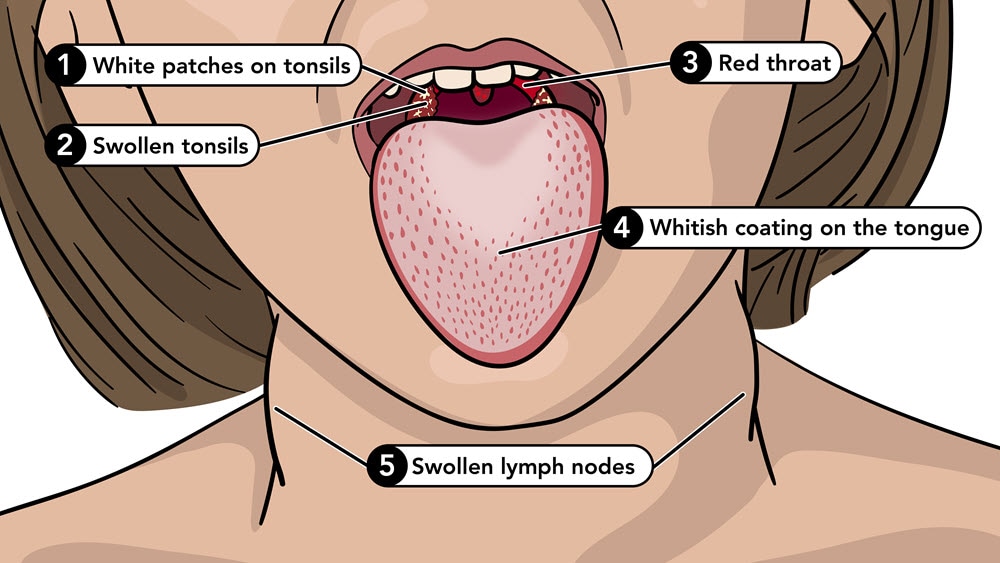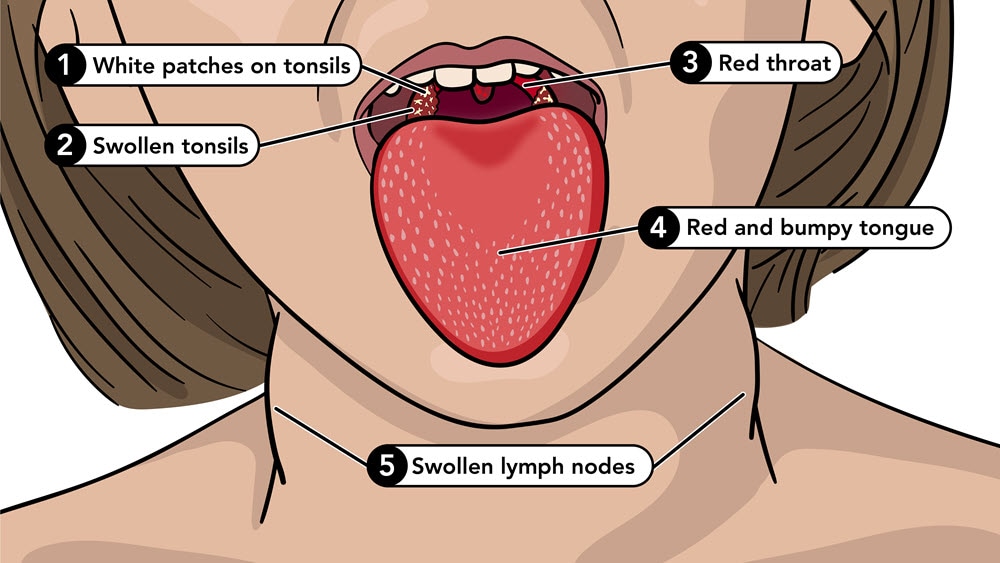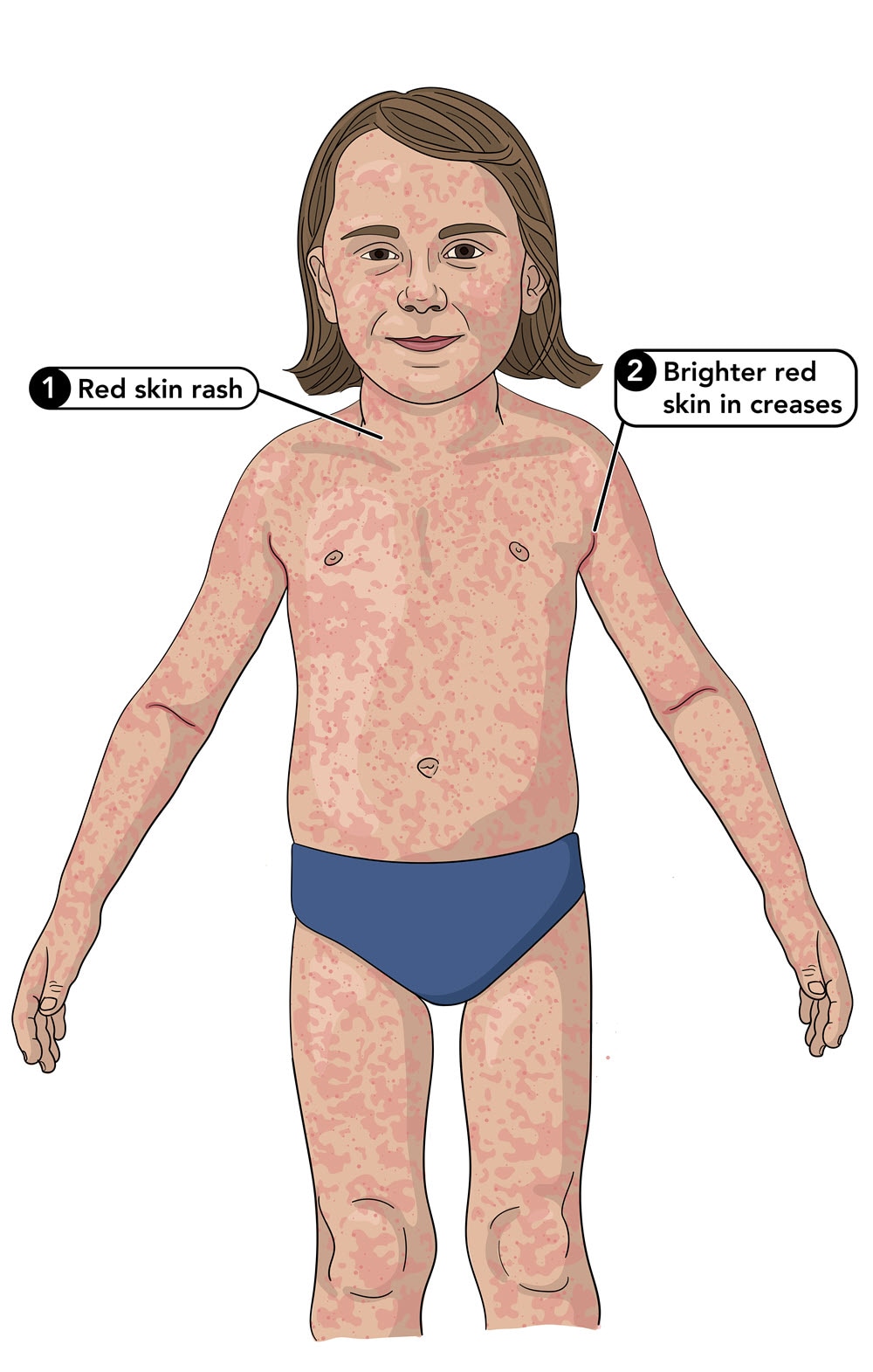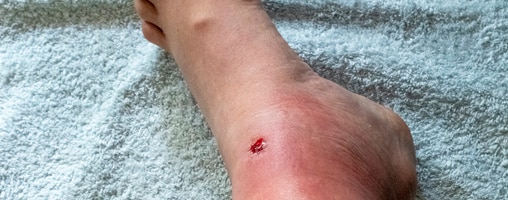Scarlet Fever: All You Need to Know

If your child has a sore throat and a rash, it may be scarlet fever (also called scarlatina). Your child’s doctor can do a quick strep test to find out.
If your child has scarlet fever, antibiotics can help your child feel better faster and prevent long-term health problems. Antibiotics can also help protect others from getting sick.
Bacteria cause scarlet fever
Bacteria called group A Streptococcus (group A strep) cause scarlet fever. These bacteria are also the cause of strep throat. The bacteria sometimes make a toxin (poison), which causes a rash — the “scarlet” of scarlet fever.
How you get scarlet fever
Group A strep bacteria are very contagious. Generally, people spread the bacteria to others through
- Respiratory droplets
- Direct contact
Rarely, people can spread group A strep bacteria through food that is not handled properly (visit CDC’s food safety page).
It usually takes two to five days for someone exposed to group A strep bacteria to become sick with strep throat or scarlet fever.
Respiratory droplets
Group A strep bacteria often live in the nose and throat. People who are infected spread the bacteria by talking, coughing, or sneezing, which creates respiratory droplets that contain the bacteria.
People can get sick if they:
- Breathe in respiratory droplets that contain the bacteria
- Touch something with those droplets on it and then touch their mouth or nose
- Drink from the same glass or eat from the same plate as a person infected with group A strep
Direct contact
People can also spread group A strep bacteria from infected sores on their skin. Other people can get sick if they:
- Touch sores on the skin caused by group A strep (impetigo) or come into contact with fluid from the sores
Some people infected with group A strep do not have symptoms or seem sick. People who are sick with strep throat are more contagious than those who do not have symptoms.
Rash and fever are common symptoms
In general, scarlet fever is a mild disease. Illness usually begins with a fever and sore throat.
General symptoms
Some symptoms of scarlet fever are common to other infections, too. These may include:
- Fever (101°F or higher) or chills
- Sore throat and pain when swallowing
- Headache or body aches
- Stomach pain
- Nausea or vomiting
Physical signs
Some physical signs are typical of scarlet fever. These show in the following areas:
- Tongue
- Throat
- Neck
- Skin
Physical signs
Tongue, throat, and neck
Signs in these areas:
- Whitish coating on the tongue, early in the illness
- “Strawberry” (red and bumpy) tongue
- Very red throat
- Red and swollen tonsils
- White patches or streaks of pus on the tonsils
- Tiny, red spots on the roof of the mouth, called petechiae
- Swollen lymph nodes in the front of the neck
The illustrations below show what these physical signs usually look like.
Skin rash
Signs of scarlet fever rash:
- Red rash that feels rough like sandpaper
- Brighter red skin in the creases of the underarm, elbow, and groin
- A pale area around the mouth
- Skin peeling as the rash fades
One to 2 days after the illness begins, a red rash usually appears. However, the rash can appear before illness or up to 7 days later.
The rash may first appear on the neck, underarm, and groin (the area where your stomach meets your thighs). Over time, the rash spreads over the body. The rash usually begins as small, flat blotches that slowly become fine bumps that feel like sandpaper.
Although the cheeks might look flushed (rosy), there may be a pale area around the mouth. Underarm, elbow, and groin skin creases may become brighter red than the rest of the rash.
The rash from scarlet fever fades in about 7 days. As the rash fades, the skin may peel around the fingertips, toes, and groin area. This peeling can last up to several weeks.
Some people are at increased risk
Anyone can get scarlet fever, but there are some factors that can increase the risk of getting this infection.
Age
Scarlet fever, like strep throat, is more common in children than adults. It is most common in children 5 through 15 years old. It is rare in children younger than 3 years old. Adults who are at increased risk for scarlet fever include:
- Parents of school-aged children
- Adults who are often in contact with children
Group settings
Close contact with another person with scarlet fever is the most common risk factor for illness. For example, if someone has scarlet fever, the bacteria often spread to other people in their household.
Infectious illnesses tend to spread wherever large groups of people gather. Crowded settings can increase the risk of getting a group A strep infection. These settings include:
- Schools
- Daycare centers
- Military training facilities
Doctors can test for and treat scarlet fever
Many viruses and bacteria can cause an illness that includes a red rash and sore throat. A doctor will determine what type of illness you have by asking about symptoms and doing a physical exam. If they think you might have scarlet fever, they will swab your throat to test for strep throat. There are two types of tests for strep throat: a rapid strep test and throat culture.
Rapid strep test
A rapid strep test involves swabbing the throat and running a test on the swab. The test quickly shows if group A strep bacteria are causing the illness.
- If the test is positive, doctors can prescribe antibiotics.
- If the test is negative, but a doctor still suspects scarlet fever, then the doctor can take a throat culture swab.
Throat culture
A throat culture takes time to see if group A strep bacteria grow from the swab. While it takes more time, a throat culture sometimes finds infections that the rapid strep test misses.
Culture is important to use in children and teens since they can get rheumatic fever from an untreated scarlet fever infection. For adults, it is usually not necessary to do a throat culture following a negative rapid strep test. Adults are generally not at risk of getting rheumatic fever following scarlet fever.
Antibiotics are used for treatment
Doctors treat scarlet fever with antibiotics. Benefits of antibiotics include:
- Decreasing how long someone is sick
- Decreasing symptoms (feeling better)
- Preventing the bacteria from spreading to others
- Preventing serious complications like rheumatic fever
When to return to work, school after illness
People with scarlet fever should stay home from work, school, or daycare until they:
- No longer have a fever
AND
- Have taken antibiotics for at least 12 to 24 hours; ask the doctor how long you should stay home after starting antibiotics
Antibiotic dos and don’ts
- Do take the prescription exactly as the doctor says to.
- Don’t stop taking the medicine, even if you or your child feels better, unless the doctor says to stop.
You can find more guidance on taking antibiotics on CDC’s Antibiotic Do’s & Don’ts Page.
Long-term health problems are not common
Complications can occur after having scarlet fever. This can happen if the bacteria spread to other parts of the body. Complications can include:
- Abscesses (pockets of pus) around the tonsils
- Swollen lymph nodes in the neck
- Ear, sinus, and skin infections
- Pneumonia (lung infection)
- Rheumatic fever (a disease that can affect the heart, joints, brain, and skin)
- Post-streptococcal glomerulonephritis (a kidney disease)
- Arthritis (joint inflammation)
Treatment with antibiotics can prevent most of these health problems.
Protect yourself and others
People can get scarlet fever more than once. Having scarlet fever does not protect someone from getting it again in the future. While there is no vaccine to prevent scarlet fever, there are things people can do to protect themselves and others.
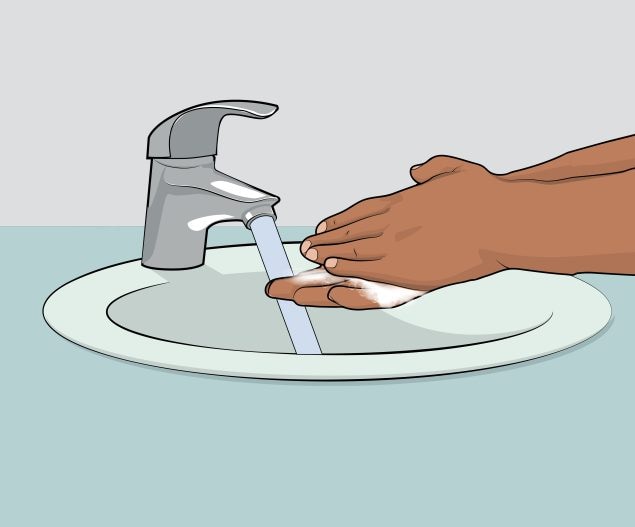
Wash your hands often to help prevent germs from spreading.
Good hygiene
The best way to keep from getting or spreading group A strep is to wash your hands often. This is especially important after coughing or sneezing and before preparing foods or eating.
To prevent group A strep infections, you should:
- Cover your mouth and nose with a tissue when you cough or sneeze.
- Put your used tissue in the waste basket.
- Cough or sneeze into your upper sleeve or elbow, not your hands, if you don’t have a tissue.
- Wash your hands often with soap and water for at least 20 seconds.
- Use an alcohol-based hand rub if soap and water are not available.
You should also wash glasses, utensils, and plates after someone who is sick uses them. These items are safe for others to use once washed.
Antibiotics
Antibiotics help prevent someone with strep throat from spreading the bacteria to others.
